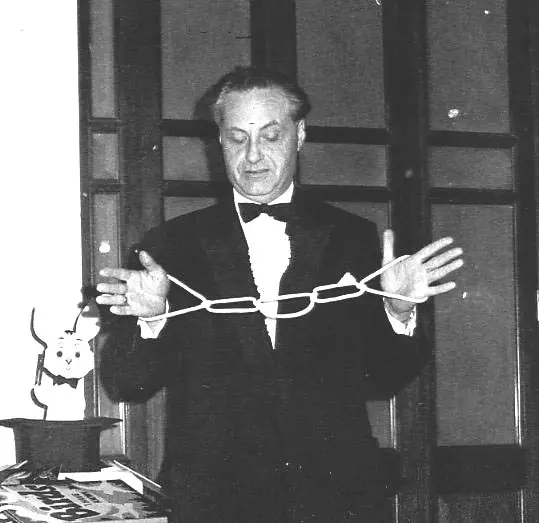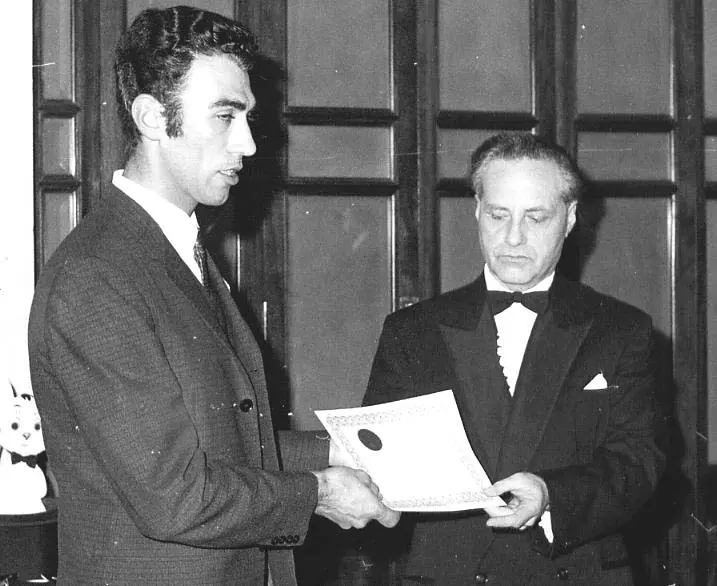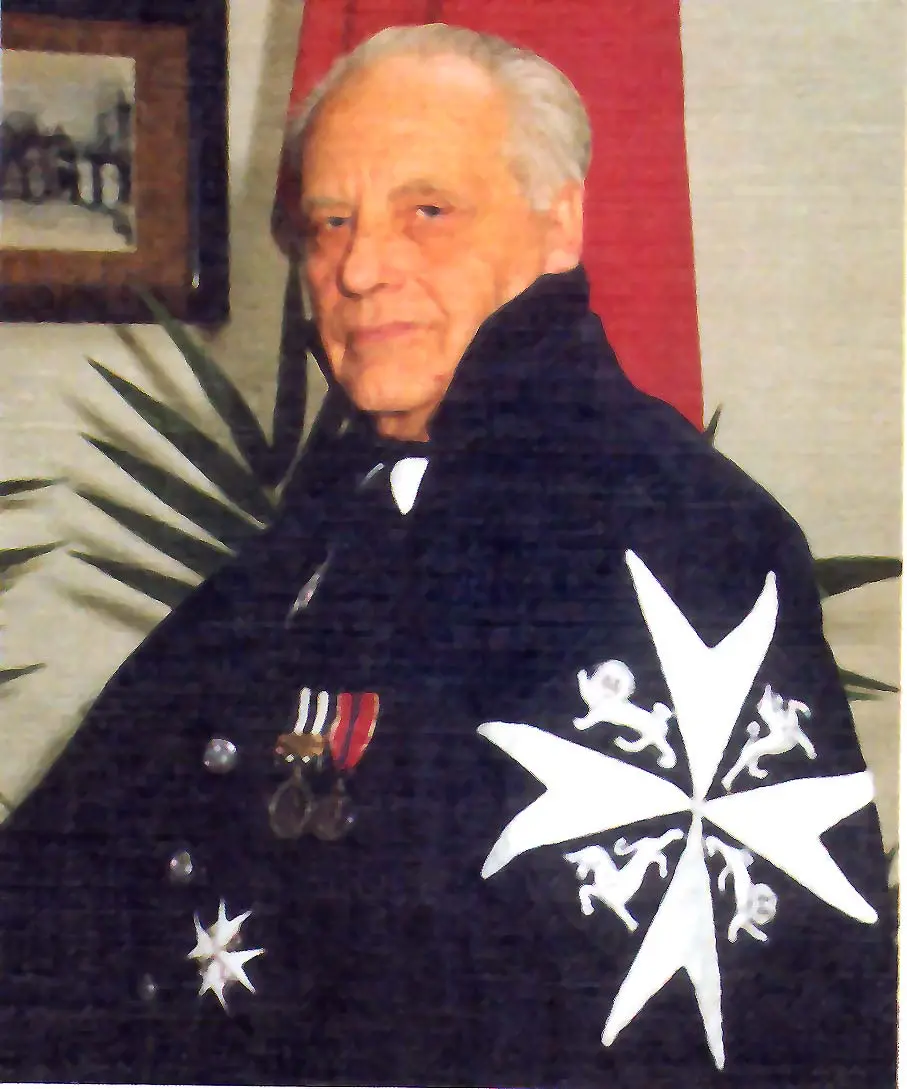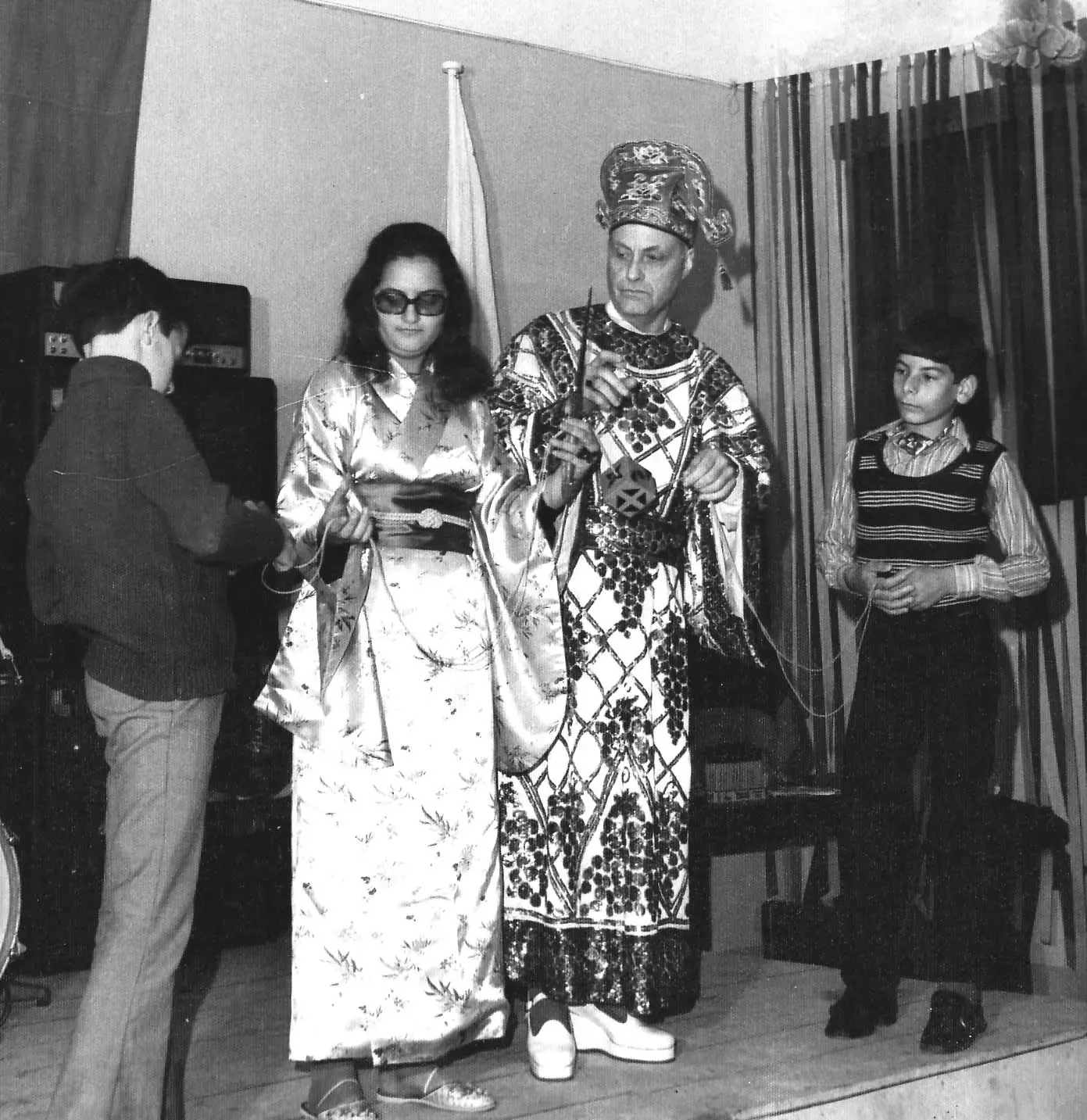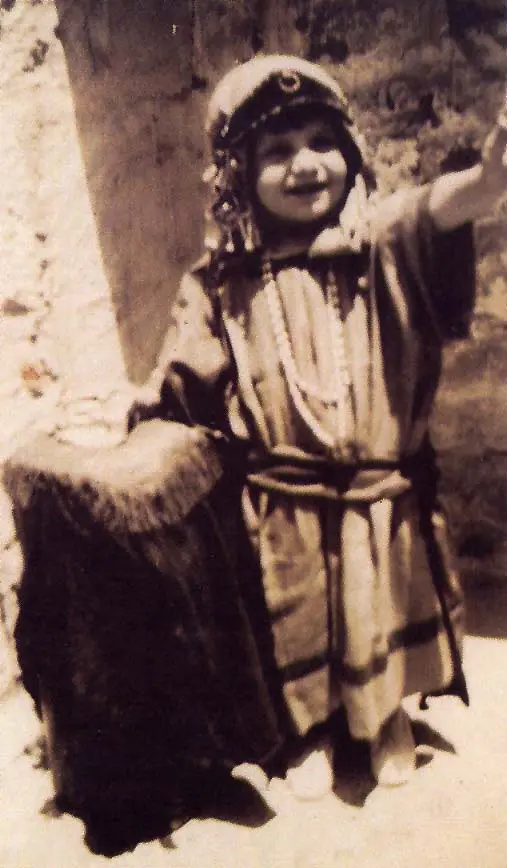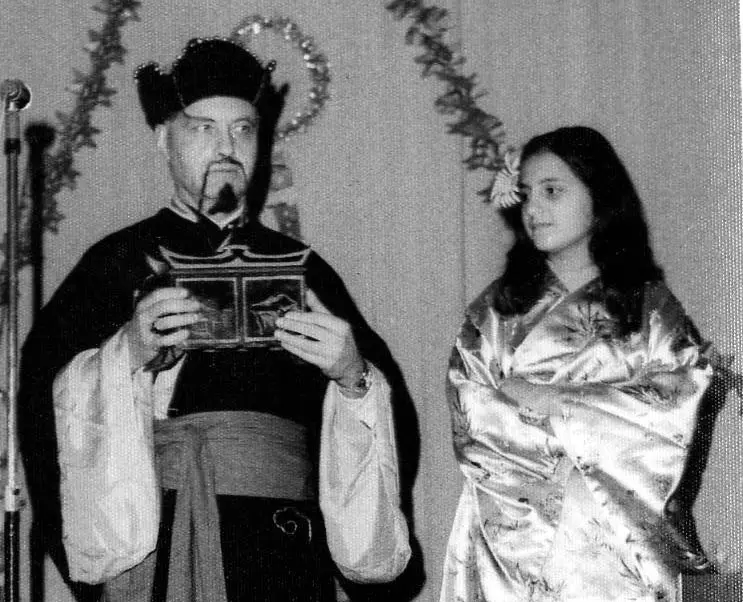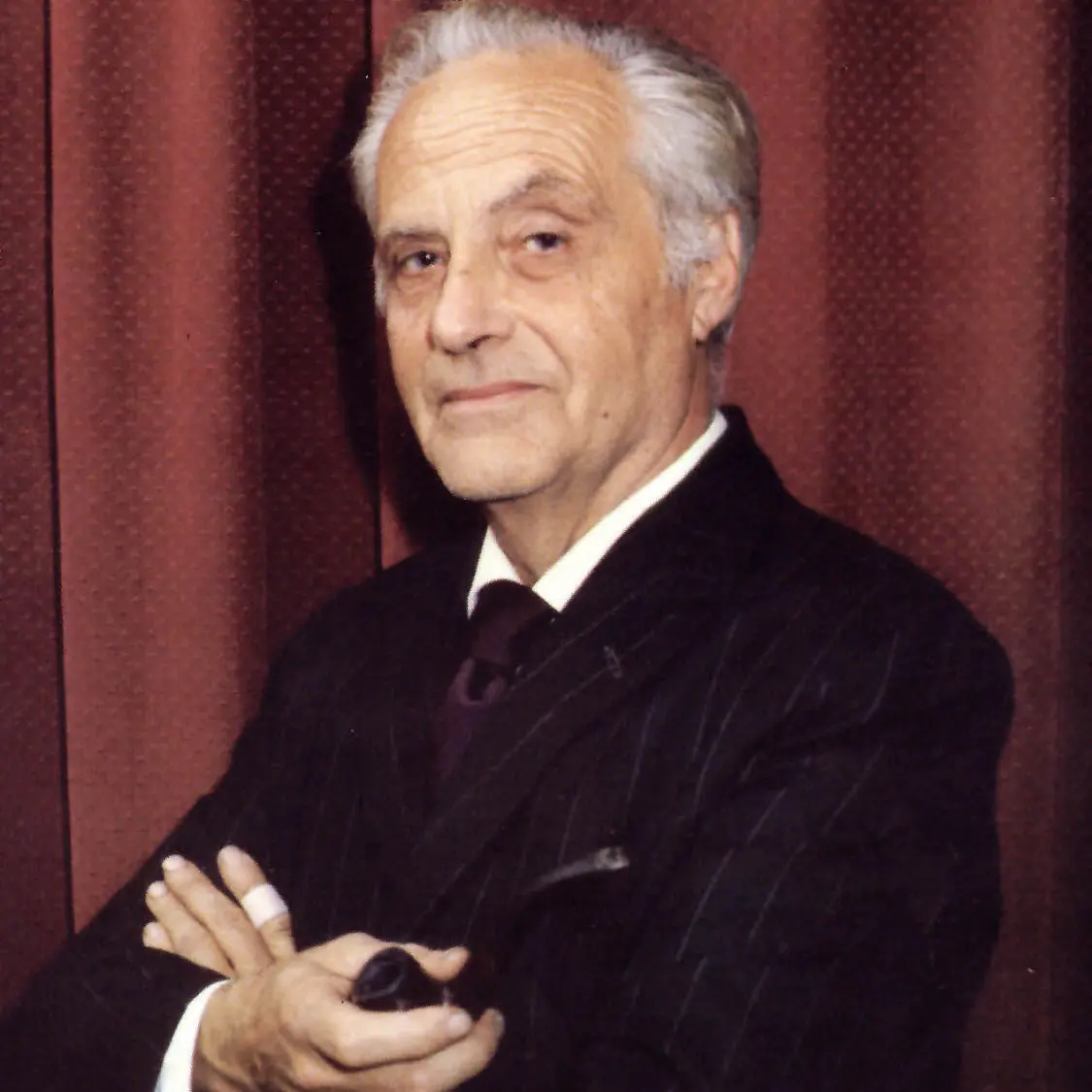
Dr. Joseph Saliba
1926 - 2010
Biography
It is so hard to find a person who is so talented in such varied phases of life. The Malta Ring was lucky in having as one of its long-standing members a veritable renaissance man, to whom Magic is just one artistic facet of his activities. Dr Joseph Saliba was a knowledgeable and academically primed magician, maker of wonderful props, visual and plastic artist and a full-time medical doctor to boot and these are not the only talents he possessed.
He was born in Vittoriosa on the 2nd September 1926 son of another Joseph and Karmena Zammit. In 1946, he obtained a degree in pharmacy and eventually graduated as a medical doctor in which profession he practised as a District Medical Officer, a deputy Medical Officer in the National Hospital, a Medical Insurance Officer in Gozo, a lecturer in the Civil Defence Academy and a Medical consultant in the Civil Prisons and with International Film Productions.
This is just for starters, because he entered politics with the Christian Workers Party led by Toni Pellegrini and later was elected to Parliament for ten years with the Malta Labour Party,ä under the Mintoff administration. He was a Commissioner for the St John’s Ambulance Brigade and a Knight of the Venerable Order of St John of Jerusalem. Besides having served for 40 years as President of the Prince of Wales Philharmonic Society, he was also Honorary President of two band clubs in Zabbar.
Magic started quite late for him. He was very much involved in theatre productions. He recalls the simple and sparse tricks performed by one of the masters of the typical stage farce – the Maltese version of the Music Hall. This Sur Xuereb used to produce a continuous flow of eggs from his mouth, something which Joseph Saliba longed to do. But it was just after the war that he surreptitiously managed to borrow some books that belonged to a master magician of the time Guse’ Gatt. Gatt’s son was a medical colleague. What are friends for, if not to secretly ‘borrow’ books from their father in aid of a good cause? Saliba rigorously copied by hand most of the books while in his possession and studied them arduously until a few months later he was able to give his own first performances. In one show at the Café Riche Vittoriosa he was billed as Abi Las Novi based on an anagram of his name.
Books were not copied any more but bought, read and conserved with great passion. Dr Saliba boasted of a voluminous collection of immortal books on the Art of Magic some of them going back to 1818 and including among them some of the really great classics. Saliba’s love of books was something which he passed on to other magicians, especially to beginners. With his book-shelves bursting at the seams he still advised magicians to read more magic books because these contain a supply of knowledge, ready for exploration and discovery.
Besides books, experience taught him what the audiences wanted. Eventually his stage productions became more elaborate and he used to present a hilarious scene where he apparently performed an operation on a lady. This was projected in shadow form on a screen. He produced all sorts of things from her abdomen including a large infant doll. This produced some concern in those puritanical times and it had to be censored. His other favourite extravaganza was the scene of the dancing skeletons. This he had seen performed by Neapolitan magician Chabernot and he found his own way or presenting it. It relied heavily on mood and atmosphere, black art and fluorescent paint. In the semi-darkness, a number of skeletons were seen dancing among the spectators and some of those bony creatures accompanied by sinister bats whizzed over them from above. Admonitions were issued continuously to warn the faint-hearted. This only helped to enhance the ambiance and always managed to produce shivers in some and extreme fear in others.
Through Magical Literature Saliba, became fascinated with oriental magicians like the Bambergs and Chung Ling Soo and followed their exploits with great admiration. His first costume was a very humble oriental tunic but during a visit to Davenport’s, in London, he managed to buy a genuine antique and sparkling mandarin outfit which cost him an arm and a leg, but which was what he had always wanted. Later on, he became a great admirer of the Italian magician Alberto Sitta who was known as Chu Chin Foo. Dr Saliba adopted this oriental persona during the height of his magical career and he was known as Dr Confucius.
As Dr Confucius and as Dr Saliba he was a great philanthropist and he worked continuously for charity and out of charity. He became a doctor of the poor and a magical entertainer to the emotionally, physically and mentally challenged
With Ring 202, he got involved in its very conception when he was invited by George Sharples and in a small group they used to meet at the General Workers’ Union building in Valletta. Later, through his contacts, Dr Saliba managed to secure a meeting room for several years in the Prince of Wales Band Club, in Vittoriosa. He was Committee member for several years and performed in the Ring Functions both in private occasions and on stage.
One early highlight in the stage shows of the Ring was a show at the Manoel Theatre in 1970. Saliba had just bought one of the limited copies of the Harbin book and he managed to make up the Upside down production box. This he proudly performed together with the Temple of Benares and the Flash Appearance and they created a colourful spectacle, which was always his forte and his passion. He became an expert prop-maker and he manufactured some wonderful illusions, among them a Goodliffe Head Chopper. He used his wood working ability tempered with engineering and artistic abilities.
He made most of his props but he did buy quite a few too. One of his favourites is the electronic spirit skull. He also had the Jack Hughes Power Sawing. He recalls with concern and a sense of mischief an incident when the long quivering blade loosened prematurely, shot out and embedded itself in the floor, inches away from the feet of a Minister and political rival.
Painting, Modelling and Wood Carving proved to be a much safer artistic expression for him. Over the years, he has produced hundreds of paintings, sculptures and models. His greatest demands came from churches but he has worked as effectively to turn out paintings and statues in restaurants and Clubs. A few months before he passed away, he was concurrently working on large oil paintings and a number of miniature statuettes.
He does not perform magic so much in his latter years, but his favourite style of magic for practical purposes had become mentalism and his bible in this respect is Corinda’s Thirteen Steps. .
Having experienced magic over four generations he had no disappointments with more contemporary magic. However he still insisted on the mystique of magic and that it should be performed with the right mise-en-scene and the appropriate mood. He was not so keen on excessive prancing and a dearth of magic. Neither was he enchanted by magic being thrown away without the appropriate presentation and aura.
His advice to young people was not to concentrate too much on making money at an early stage but more on making good magic. Besides, he kept emphasizing the necessity of reading to obtain the necessary background knowledge that leads to creativity. He also believed very firmly in team spirit and that young wizards should join a club to enrich and share their knowledge with others.
In his latter years, Dr Saliba lived quietly in Marsascala with his wife Maria to whom he had been married since 1952. His four children were married with their own families. Surrounded with paintings, magic books, magic props and all kinds of collectibles; he was is a fountain of energy and a mine of artistic ability. He passed away after a short sickness on Wednesday 3rd November 2010.
